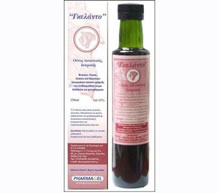
Λεξικό .. Allergy to hymenoptera
Allergy to hymenoptera
Systemic allergic reactions to Hymenoptera venom occur in a percentage that varies from 0.4 to 3.3% [1] and to account for 40-100 deaths annually in the USA[2].Epidemiological studies indicate that from 15 to 25% of the general population can be sensitized to different Hymenoptera venom as well as the fact that the degree of exposure may be related to the prevalence found in those studies[1]. Several investigations have shown that the emergency treatment given to these patients is often inadequate. Cutaneous symptoms respond well to antihistamines and also to adrenaline. Adrenaline is the mainstay for outside hospital treatment of more severe reactions involving the respiratory tract (bronchial asthma, laryngeal oedema) and the cardiovascular system (anaphylactic shock). Inhaled adrenaline is especially useful in respiratory symptoms, while parenteral application of adrenaline is prefered for shock treatment. All patients with severe respiratory or cardiovascular reactions must be hospitalized, treated under intensive care conditions and observed for at least 24 hr. Emergency medications including adrenaline for inhalation or for self-injection must be given to all patients with a history of systemic allergic reactions to hymenoptera stings. These patients must also get instructions for safety measures to avoid further stings. They should be referred to an allergist in order to evaluate the indication for venom immunotherapy.[3].
Patients with bee or wasp sting allergy can lose their hypersensitivity spontaneously. This can be detected and demonstrated by successfully deliberate sting challenges[4]. Concordance with national guidelines for the treatment of anaphylaxis remains poor among insect-sting allergy patients. The development of a simple, clinical definition of anaphylaxis is urgently needed to facilitate identification of cases. Such a definition would help tremendously with dissemination of emergency management guidelines and the creation of systems for their implementation. All of these steps are essential for the improved treatment and prevention of insect-sting anaphylaxis in the ED [4]. (See Hymenoptera, Venom Immunotherapy)[5].
References
1. Fernandez J, Soriano V, Mayorga L, Mayor M. Natural history of Hymenoptera venom allergy in Eastern Spain. Clin Exp Allergy. 2005 Feb;35(2):179-85.
2. Clark S, Camargo CA Jr. Emergency treatment and prevention of insect-sting anaphylaxis. Curr Opin Allergy Clin Immunol. 2006 Aug;6(4):279-83.
4. Nusslein, H.G., Baenkler, H. - W.: Spontaneous loss of hypersensitivity in patients allergic to bee or wasp stings: detection by venom-induced histamine release. Ann. Allergy 34, No. 4, p. 516. 1985.
4. Ciszowski K, Mietka-Ciszowska A. Hymenoptera stings.Przegl Lek. 2007;64(4-5):282-9
Γκέλης Ν.Δ. - Λεξικό Αλλεργίας - Εκδόσεις ΒΕΛΛΕΡOΦΟΝΤΗΣ - Κόρινθος 2013
Gelis Ν.D. - Dictionary of Allergies - VELLEROFONTIS Publications - Corinth 2013




